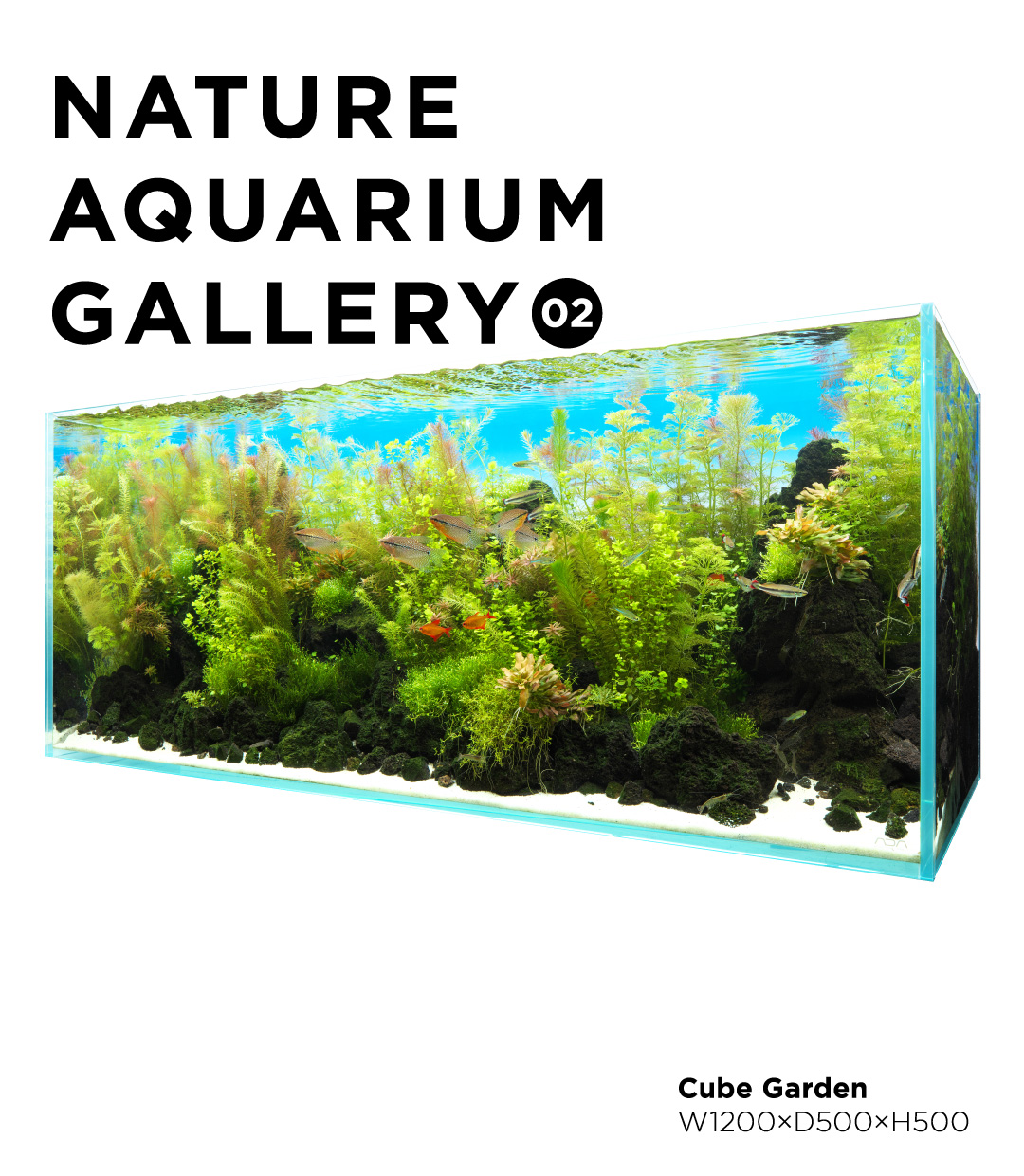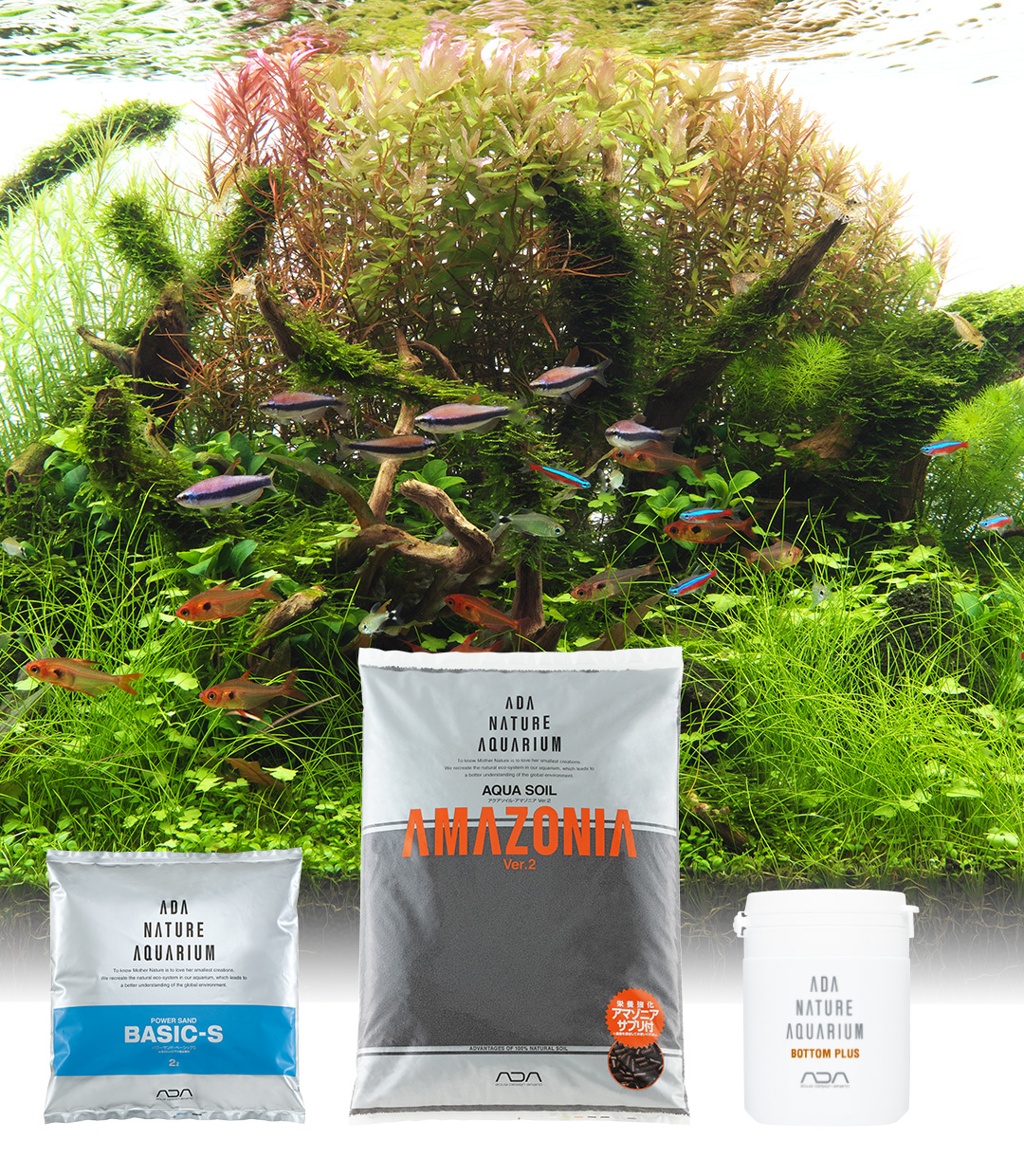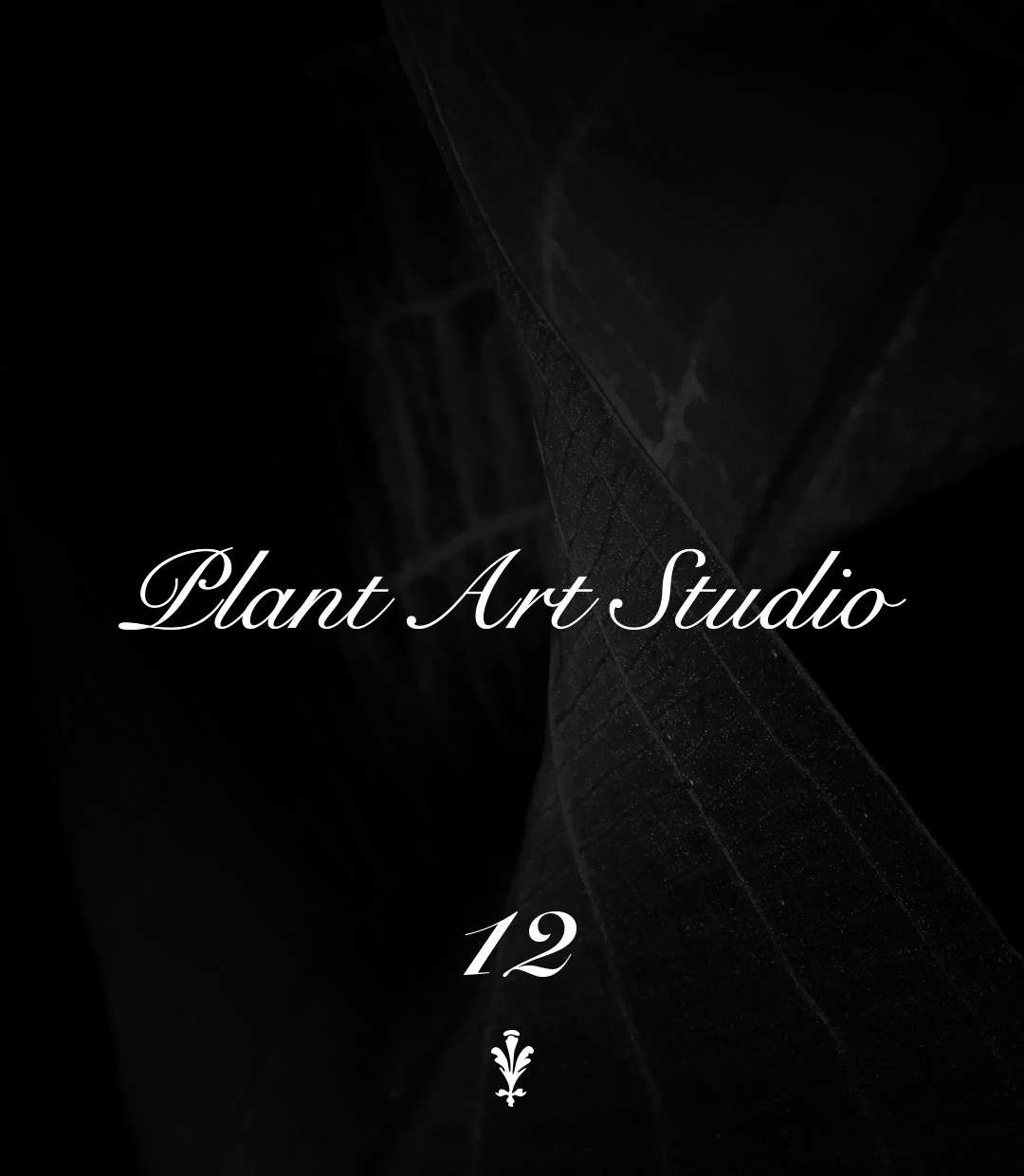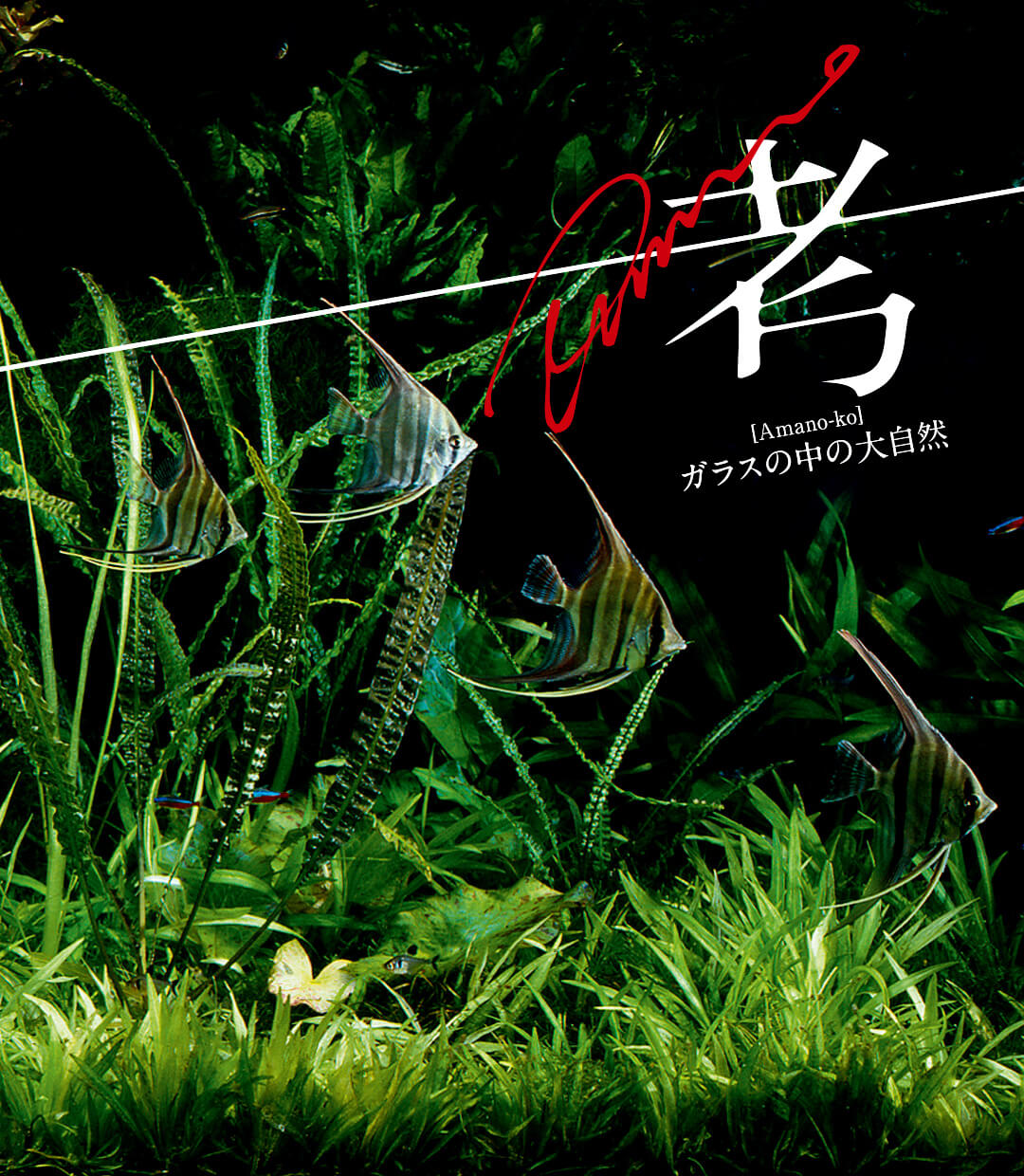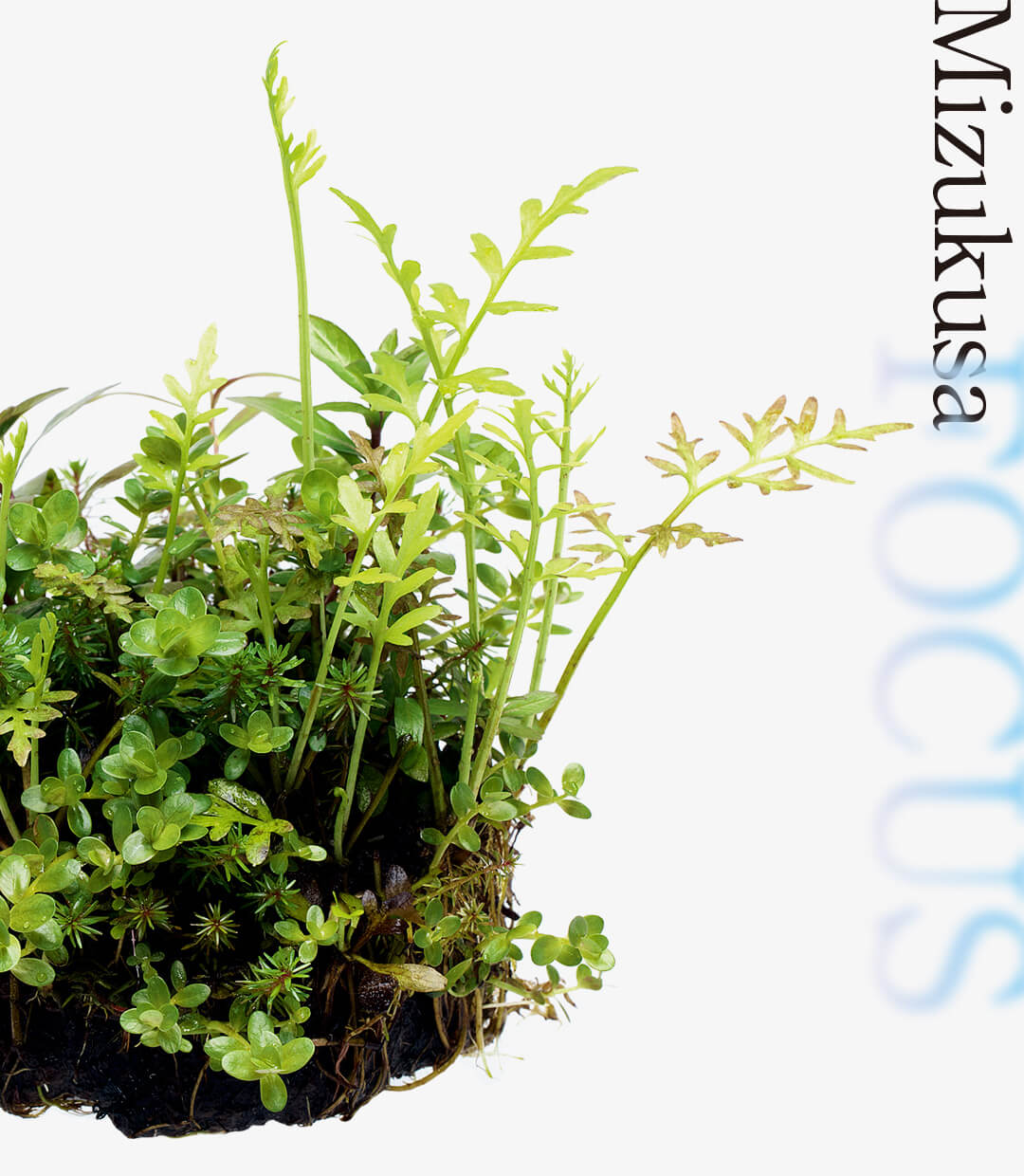HOW TO 2024.06.07
CREATOR WORKS : Forest Crossroads

This aquascape, designed for long-term maintenance, is themed around creating a tranquil environment for its fish. In a sense, it represents a return to the roots of the Nature Aquarium concept. The fish swim about actively and sometimes gather under the arch of driftwood. Observing them behaving as I had intended gives me a feeling of connection.

Photographed on December 1, 2022

Photographed on March 23, 2023
DATA
Cretation date: November 30, 2022
Photo taken on: March 23, 2023
Creator: Naru Uchida(ADA SUIKEI CREATOR)
Aquarium: Cube Garden W1,800×D600×H600(mm)
Lighting: Solar RGB x 3 (8.5 hours per day)
Filtration: Super Jet Filter ES-2400 (Bio Rio G)
Material: Horn Wood, Kei Stone
Substrate: Aqua Soil – Amazonia Ver.2, Power Sand Advance L, Bacter 100, Clear Super, Tourmaline BC, DOOA Tropical River Sand, Colorado Sand, Gravel
CO2: Pollen Glass Beetle 50Ø, 5 bubbles per second via CO2 Beetle Counter (using Tower)
Aeration: 15.5 hours after the light is turned off using Lily Pipe P-6
Additives: Brighty K, Green Brighty Mineral, Green Brighty Iron, Green Brighty Nitrogen
Water change: 1/3 once a week
Water quality: Temperature 25°C, pH: 6.2, TH: 50 mg/L
Plants
1. Anubias barteri var. nana
2. Anubias barteri var. nana ‘Petite’
3. Anubias barteri ‘Coffeefolia’
4. Anubias barteri var. barteri
5. Microsurum pteropus
6. Microsorum sp. ‘Narrow Leaf’
7. Bolbitis heudelotii
8. Blyxa auberti
9. Blyxa auberti ‘Red’
10. Nymphaea lotus ‘Green’
11. Nymphaea lotus ‘Red’
12. Eriocaulon sp. ‘Social Feather Duster’
13. Ludwigia eel tricolor
14. Rotala sp.
15. Cryptocoryne axelrodi
16. Cryptocoryne wendtii ‘Green Gecko’
17. Scindapsus sp.
18. Ophiopogon japonicus
19. Taxiphyllum barbieri
20. Vesicularia dubyana
Fish
Phenacogrammus caudomaculatus
Phenacogrammus aurantiacus
Alestopetersius smykalai
Badis badis
Crossocheilus oblongus
Otocinclus sp.
Caridina multidentata
Cretation date: November 30, 2022
Photo taken on: March 23, 2023
Creator: Naru Uchida(ADA SUIKEI CREATOR)
Aquarium: Cube Garden W1,800×D600×H600(mm)
Lighting: Solar RGB x 3 (8.5 hours per day)
Filtration: Super Jet Filter ES-2400 (Bio Rio G)
Material: Horn Wood, Kei Stone
Substrate: Aqua Soil – Amazonia Ver.2, Power Sand Advance L, Bacter 100, Clear Super, Tourmaline BC, DOOA Tropical River Sand, Colorado Sand, Gravel
CO2: Pollen Glass Beetle 50Ø, 5 bubbles per second via CO2 Beetle Counter (using Tower)
Aeration: 15.5 hours after the light is turned off using Lily Pipe P-6
Additives: Brighty K, Green Brighty Mineral, Green Brighty Iron, Green Brighty Nitrogen
Water change: 1/3 once a week
Water quality: Temperature 25°C, pH: 6.2, TH: 50 mg/L
Plants
1. Anubias barteri var. nana
2. Anubias barteri var. nana ‘Petite’
3. Anubias barteri ‘Coffeefolia’
4. Anubias barteri var. barteri
5. Microsurum pteropus
6. Microsorum sp. ‘Narrow Leaf’
7. Bolbitis heudelotii
8. Blyxa auberti
9. Blyxa auberti ‘Red’
10. Nymphaea lotus ‘Green’
11. Nymphaea lotus ‘Red’
12. Eriocaulon sp. ‘Social Feather Duster’
13. Ludwigia eel tricolor
14. Rotala sp.
15. Cryptocoryne axelrodi
16. Cryptocoryne wendtii ‘Green Gecko’
17. Scindapsus sp.
18. Ophiopogon japonicus
19. Taxiphyllum barbieri
20. Vesicularia dubyana
Fish
Phenacogrammus caudomaculatus
Phenacogrammus aurantiacus
Alestopetersius smykalai
Badis badis
Crossocheilus oblongus
Otocinclus sp.
Caridina multidentata

SUIKEI CREATOR INTERVIEW
Naru Uchida
Aquascape creation with the wellbeing of its fish in mind.
--- First, please tell us about the concept of this aquascape.
The title of this work is “Forest Crossroads.” The central driftwood intersects to form a tunnel-like space where various types of fish can be observed swimming through. This is one of the highlights of the aquascape. As you can see from the composition, I primarily used straight-branched hornwood, arranging the radiating branches to intersect. Ferns are placed at these intersection points, creating distinct dense and open areas that provide swimming spaces for the fish. This also gives the aquascape a sense of openness, drawing the viewer’s eye deeper into the scene. I was inspired by the materials themselves, like driftwood and stones, more than my memories. The final image I envisioned was a place where the open areas and the shadows created by the growing ferns and Scindapsus sp. provide a peaceful habitat for the fish. I imagined the fish in the 600mm deep tank swimming back and forth through the driftwood tunnel as I created the layout. As the title “Forest Crossroads” suggests, I wanted the three types of fish—Phenacogrammus caudomaculatus,
Phenacogrammus aurantiacus, Alestopetersius smykalai—to swim briskly and cross paths in the central space. Throughout the entire creation process, the vision of the fish swimming happily through the aquascape was floating in my mind.
---During the composition stage, the strength of the driftwood is quite impressive. What was your intention behind this?
While designing the layout, I was mindful of creating a sense of openness and ensuring swimming space for the fish. I also aimed to establish a solid structure for long-term maintenance.To achieve this, I looked at the driftwood arrangement and skeletal structure of the 4-meter tank at Amano’s residence. That aquascape has been successfully maintained for over 20 years, so I thought it must be the right approach (laughs). Revisiting long-term maintained aquascapes and thinking about their composition from a fresh perspective made me appreciate the genius of Takashi Amano’s layout structures, especially regarding maintenance. Seeing Amano’s work with a beginner’s eye reminded me of the importance of a well-considered layout for both aesthetics and longevity.

Photographed on November 30, 2022.
---How did you approach planting aquatic plants with long-term maintenance in mind?
For long-term maintenance, I believe that space is crucial. As aquatic plants grow, they fill the available space, and those that cannot get enough light begin to decline. To maintain the scenery, it’s essential to ensure space for light to reach the plants efficiently. The composition of the planting is also important. For example, if large ferns like Microsorum become too big, they can overshadow and stunt the growth of plants beneath them. So, I planted shade-loving plants under the ferns, to optimize light availability and plant growth. Planting plans often focus on a flat layout from front to back, but the vertical relationship is also very important. I carefully designed the layout to maintain balance and harmony in both dimensions. In the foreground, I chose to use decorative sand instead of planting aquatic plants, not only to maintain a bright appearance at the tank bottom but also to preserve open space for fish to swim freely. Additionally, as aquatic plants grow densely, stagnant water areas can form, leading to the growth of algae. Therefore, I considered water flow and circulation when planning the layout. These considerations are essential for long-term maintenance, and I took inspiration from the 4-meter tank at Amano’s residence for layout composition and maintenance strategies.
---You used a lot of epiphytic aquatic plants, were there any points to be cautious about?
At some point the composition started looking too artificial, so I placed epiphytic aquatic plants at the intersections of the driftwood. By hiding these intersections with epiphytic aquatic plants, I aimed to soften the artificial aspects and achieve a more natural look. I also anchored the base of the driftwood with epiphytic aquatic plants. It’s important to pay attention to the direction of growth points for plants like Anubias and consider in which direction you want them to grow when positioning them. Additionally, I used two types of Anubias with different leaf sizes to create a natural feel.
---Next, regarding the substrate, could you tell us why you chose decorative sand?
I chose decorative sand instead of soil to secure a swimming space. Additionally, to balance the color tone with the Kei stone, I mixed Colorado Sand with Tropical River Sand for color adjustment.
--- So, did you intentionally choose Kei stones based on their color? For example, avoiding pinkish ones.
I didn’t specifically choose based on color, but I did select some with a reddish tint. Over time, algae naturally adhere to the stones underwater, changing their color to blend with the decorative sand. Normally, algae on stones should be scrubbed off as part of maintenance. However, in this aquascape, I sometimes intentionally did not scrub them off. I paid attention to the color harmony between the driftwood arch, stones, and decorative sand. I believe the weathered appearance of stones created over time adds to the scenery’s character. Thus, lightly adhering algae on the stones doesn’t always need to be thoroughly cleaned. Excessive scrubbing can disrupt the balance of the overall texture, creating a sense of discord. This is an important management point in aquascape presentation.
For long-term maintenance, I believe that space is crucial. As aquatic plants grow, they fill the available space, and those that cannot get enough light begin to decline. To maintain the scenery, it’s essential to ensure space for light to reach the plants efficiently. The composition of the planting is also important. For example, if large ferns like Microsorum become too big, they can overshadow and stunt the growth of plants beneath them. So, I planted shade-loving plants under the ferns, to optimize light availability and plant growth. Planting plans often focus on a flat layout from front to back, but the vertical relationship is also very important. I carefully designed the layout to maintain balance and harmony in both dimensions. In the foreground, I chose to use decorative sand instead of planting aquatic plants, not only to maintain a bright appearance at the tank bottom but also to preserve open space for fish to swim freely. Additionally, as aquatic plants grow densely, stagnant water areas can form, leading to the growth of algae. Therefore, I considered water flow and circulation when planning the layout. These considerations are essential for long-term maintenance, and I took inspiration from the 4-meter tank at Amano’s residence for layout composition and maintenance strategies.
---You used a lot of epiphytic aquatic plants, were there any points to be cautious about?
At some point the composition started looking too artificial, so I placed epiphytic aquatic plants at the intersections of the driftwood. By hiding these intersections with epiphytic aquatic plants, I aimed to soften the artificial aspects and achieve a more natural look. I also anchored the base of the driftwood with epiphytic aquatic plants. It’s important to pay attention to the direction of growth points for plants like Anubias and consider in which direction you want them to grow when positioning them. Additionally, I used two types of Anubias with different leaf sizes to create a natural feel.
---Next, regarding the substrate, could you tell us why you chose decorative sand?
I chose decorative sand instead of soil to secure a swimming space. Additionally, to balance the color tone with the Kei stone, I mixed Colorado Sand with Tropical River Sand for color adjustment.
--- So, did you intentionally choose Kei stones based on their color? For example, avoiding pinkish ones.
I didn’t specifically choose based on color, but I did select some with a reddish tint. Over time, algae naturally adhere to the stones underwater, changing their color to blend with the decorative sand. Normally, algae on stones should be scrubbed off as part of maintenance. However, in this aquascape, I sometimes intentionally did not scrub them off. I paid attention to the color harmony between the driftwood arch, stones, and decorative sand. I believe the weathered appearance of stones created over time adds to the scenery’s character. Thus, lightly adhering algae on the stones doesn’t always need to be thoroughly cleaned. Excessive scrubbing can disrupt the balance of the overall texture, creating a sense of discord. This is an important management point in aquascape presentation.


--- Are there any other points you were careful about in terms of management?
Not over-managing was crucial. As previously mentioned, excessive intervention can make the composition too artificial and unnatural. Sometimes, it is necessary to let the aquatic plants grow naturally, which is a difficult balance to achieve. Especially with this type of aquascape, over-trimming is detrimental. At ADA, since we manage aquascapes as a team, sharing this nuanced sense of balance was also a challenge.
--- The fish species you selected are quite unique. Could you tell us the reason for your choices?
Here, because the driftwood has a strong impact, I thought it would be best to choose fish that are large enough and have a clearly defined silhouette to stand out in photographs of the aquascape. While there is the option of having small fish swim in schools, I felt that fish that play and swim in the central space, which serves as an intersection, better suited the concept than those that swim fluidly across the scene. Recently, I’ve become particularly conscious of the comfort of the fish, which I believe is an important sense to have as an ADA SUIKEI Creator.
--- This time, the habitat of the fish seems to be a key point.
Yes, that’s right. However, even if we accurately recreate a natural habitat, it might be boring as an aquarium. I believe the goal of a Nature Aquarium is to create a landscape so beautiful that it makes one feel as if the fish are swimming in a natural water body. In this sense, creating this work was a good opportunity to reaffirm the essence and philosophy of Nature Aquariums. Although we introduced it as a completed aquascape in this magazine, maintaining it for another 3 to 5 years would likely reveal different aspects and expressions.
--- Do you have a favorite part of this work?
Firstly, I think we (might have) succeeded in creating an environment where the fish can swim comfortably. It’s nice to be able to watch the fish occasionally gather and swim in the intersection space as the title suggests. Additionally, the way the volume of the two types of Microsorum complements the vigor of the Scindapsus sp. above the water contributes to the overall cohesiveness, and it reminds me of Amano’s 4-meter tank at his home, which I love. Another thing, after completing this layout, we had the layout production for AOAO SAPPORO lined up, and I think the experience of creating this aquascape had a positive influence on our new creative activities there.
Layout video now available in ADA view:
[ADAview] Forest Crossroad 森の交差点 -W1800mm NatureAquarium Layout-【EN/JP Sub.】 (youtube.com)
Not over-managing was crucial. As previously mentioned, excessive intervention can make the composition too artificial and unnatural. Sometimes, it is necessary to let the aquatic plants grow naturally, which is a difficult balance to achieve. Especially with this type of aquascape, over-trimming is detrimental. At ADA, since we manage aquascapes as a team, sharing this nuanced sense of balance was also a challenge.
--- The fish species you selected are quite unique. Could you tell us the reason for your choices?
Here, because the driftwood has a strong impact, I thought it would be best to choose fish that are large enough and have a clearly defined silhouette to stand out in photographs of the aquascape. While there is the option of having small fish swim in schools, I felt that fish that play and swim in the central space, which serves as an intersection, better suited the concept than those that swim fluidly across the scene. Recently, I’ve become particularly conscious of the comfort of the fish, which I believe is an important sense to have as an ADA SUIKEI Creator.
--- This time, the habitat of the fish seems to be a key point.
Yes, that’s right. However, even if we accurately recreate a natural habitat, it might be boring as an aquarium. I believe the goal of a Nature Aquarium is to create a landscape so beautiful that it makes one feel as if the fish are swimming in a natural water body. In this sense, creating this work was a good opportunity to reaffirm the essence and philosophy of Nature Aquariums. Although we introduced it as a completed aquascape in this magazine, maintaining it for another 3 to 5 years would likely reveal different aspects and expressions.
--- Do you have a favorite part of this work?
Firstly, I think we (might have) succeeded in creating an environment where the fish can swim comfortably. It’s nice to be able to watch the fish occasionally gather and swim in the intersection space as the title suggests. Additionally, the way the volume of the two types of Microsorum complements the vigor of the Scindapsus sp. above the water contributes to the overall cohesiveness, and it reminds me of Amano’s 4-meter tank at his home, which I love. Another thing, after completing this layout, we had the layout production for AOAO SAPPORO lined up, and I think the experience of creating this aquascape had a positive influence on our new creative activities there.
Layout video now available in ADA view:
[ADAview] Forest Crossroad 森の交差点 -W1800mm NatureAquarium Layout-【EN/JP Sub.】 (youtube.com)
